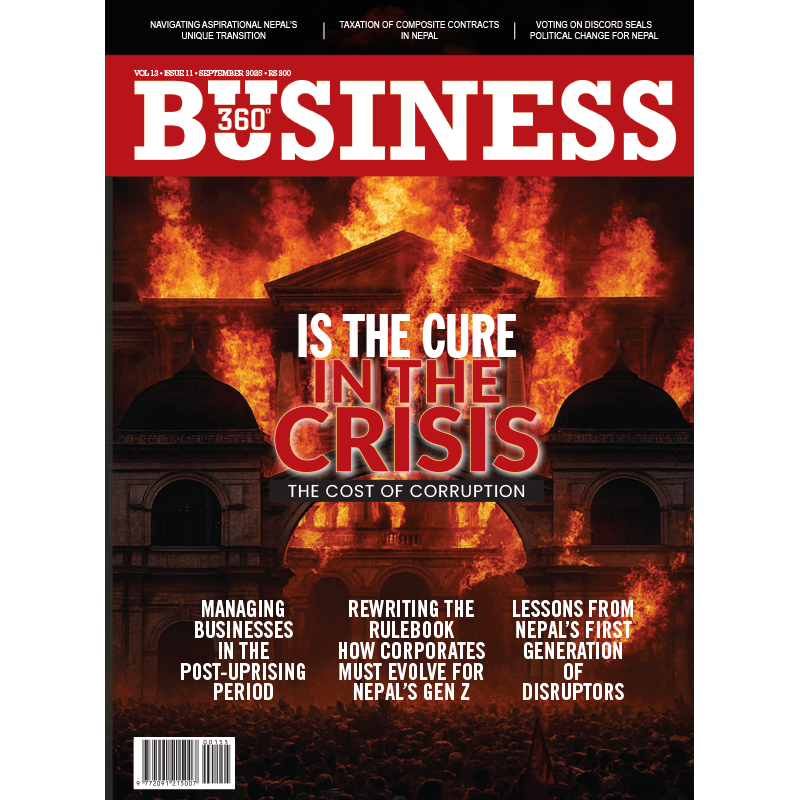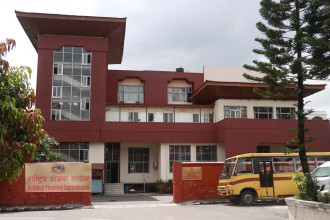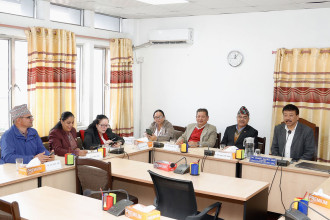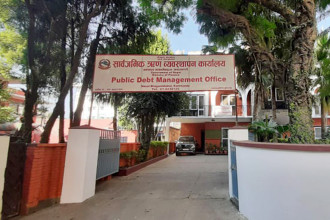
KATHMANDU: The country’s remittance inflows increased 16.8% to Rs 281.05 billion in the first three months of current fiscal year 2022/23, according to data released by Nepal Rastra Bank.
In the same period of the previous fiscal year, the remittance inflows had decreased 7.1%. In US Dollar terms, remittance inflows increased 7.9% to 2.19 billion against a decrease of 7.1% in the same period of the previous year.
According to the central bank, number of Nepali workers taking new approval (institutional and individual) for foreign employment increased 123.1% to 147,932 in the review period. Likewise, the number of Nepali workers taking renew entry approval for foreign employment increased 66.2% to 57,861. It had increased 219.7% in the same period of the previous FY.
Similarly, net transfer increased 17.1% to Rs 310.43 billion in the first three months of the current FY against decreased 7.6% in the previous year.
The NRB data shows that y-o-y consumer price inflation remained at 8.50% in mid-October 2022 compared to 4.24% a year ago. Food and beverage inflation stood at 8.05% while non-food and service inflation registered 8.85%.
Under the food and beverage category, y-oy consumer price inflation of restaurant and hotel sub-category increased 15.91%, fruit 12.06%, alcoholic drinks 10.24%, milk products and eggs 9.45% and tobacco products 8.44%.
similarly, under the non-food and services category, yo-y consumer price inflation of transportation sub-category increased 21.15%, health 10.54%, furnishing & household equipment 9.45%, education 8.11%, and housing and utilities 7.68%.
The consumer price inflation in Kathmandu Valley, Tarai, Hill and Mountain surged to 6.93%, 9.42%, 8.84% and 7.07% respectively. Inflation in these regions were 3.48%, 4.01%, 5.68% and 3.12% respectively a year ago.
During the three months of current FY, merchandise imports decreased 16.2% to Rs 401 billion against an increase of 63.7% a year ago. Destination-wise, imports from India, China and other countries decreased 14.8%, 16.7%, and 19.2% respectively. Imports of petroleum products, chemical fertiliser, sponge iron, medicine, coal, among others, increased whereas imports of transport equipment and parts, silver, telecommunication equipment and parts, crude soyabean oil, MS wire rod, bars, coils and others, among others, decreased in the review period.
Further, the central bank's data shows that Balance of Payments (BOP) remained at a surplus of Rs 12.43 billion in the review period compared to a deficit of Rs 87.71 billion in the same period of the previous year. In US Dollar terms, the BOP remained at a surplus of 91.8 million in the review period compared to a deficit of 741.2 million in the same period of the previous year.
The Gross foreign exchange reserves increased 2.5% to Rs 1246.22 billion in mid-October 2022 from Rs 1215.80 billion in mid-July 2022. In US dollar terms, the gross foreign exchange reserves decreased 0.6% to 9.48 billion in mid-October 2022 from 9.54 billion in mid-July 2022.
In the review period, the total expenditure of the federal government according to data from Financial Comptroller General Office (FCGO), Ministry of Finance, stood at Rs 278.17 billion.
Likewise, the recurrent expenditure, capital expenditure and financial expenditure amounted to Rs 223.75 billion, Rs 19.68 billion and Rs 34.73 billion respectively in the review period.
Similarly, Broad money (M2) increased 0.7% in the review period compared to an increase of 2.2% in the corresponding period of the previous year. On y-o-y basis, M2 expanded 5.3% in mid-October 2022.
Deposits at Banks and Financial Institutions (BFIs) increased 0.4% in the review period compared to an increase of 1.2% in the corresponding period of the previous year. On y-oy basis, deposits at BFIs expanded 8.2% in mid-October 2022.
Private sector credit from BFIs increased 1.3% in the review period compared to an increase of 7.7% in the corresponding period of previous year. On y-o-y basis, credit to the private sector from BFIs increased 6.4% in mid-October 2022.
READ ALSO:
- Consumer price inflation remains at 8.64 pc: NRB
- Nepal records Rs 187.04bn remittance inflows in first two month of FY 2022/23
- Nepal records Rs 92.21bn remittance inflows in first month of FY 2022/23
- Nepal’s consumer price inflation remained at 6.32% in FY 2021/22: NRB
- Nepal records Rs 904.18bn remittance inflows in 11 months of current FY
Published Date: November 17, 2022, 12:00 am
Post Comment
E-Magazine
RELATED B360 National


-1762016968.jpg)


